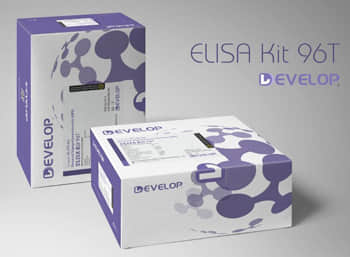Human Apelin 17 (AP17) ELISA Kit


two product lines: Traditional ELISA Kit and Ready-to-Use ELISA Kit.
Other names:APLN17
Function: Component of the adaptor protein complex 2 (AP-2). Adaptor protein complexes function in protein Transport via Transport vesicles in different membrane traffic pathways. Adaptor protein complexes are vesicle coat components and appear to be involved in cargo selection and vesicle formation. AP-2 is involved in clathrin-dependent endocytosis in which cargo proteins are incorporated into vesicles surrounded by clathrin (clathrin-coated vesicles, CCVs) which are destined for fusion with the early endosome. The clathrin lattice serves as a mechanical scaffold but is itself unable to bind directly to membrane components. Clathrin-associated adaptor protein (AP) complexes which can bind directly to both the clathrin lattice and to the lipid and protein components of membranes are considered to be the major clathrin adaptors contributing the CCV formation. AP-2 also serves as a cargo receptor to selectively sort the membrane proteins involved in receptor-mediated endocytosis. AP-2 seems to play a role in the recycling of synaptic vesicle membranes from the presynaptic surface. AP-2 recognizes Y-X-X-[FILMV] (Y-X-X-Phi) and [ED]-X-X-X-L-[LI] endocytosis signal motifs within the cytosolic tails of transmembrane cargo molecules. AP-2 may also play a role in maintaining normal post-endocytic trafficking through the ARF6-regulated, non-clathrin pathway. The AP-2 alpha and AP-2 sigma subunits are thought to contribute to the recognition of the [ED]-X-X-X-L-[LI] motif (By similarity). May also play a role in extracellular calcium homeostasis.
Sequence:
50 MIRFILIQNR AGKTRLAKWY MQFDDDEKQK LIEEVHAVVT VRDAKHTNFV 100 EFRNFKIIYR RYAGLYFCIC VDVNDNNLAY LEAIHNFVEV LNEYFHNVCE 140 LDLVFNFYKV YTVVDEMFLA GEIRETSQTK VLKQLLMLQS LE
INTENDED USE
The kit is a competitive inhibition enzyme immunoassay technique for the in vitro quantitative measurement of AP17 in human serum, plasma, tissue homogenates, cell lysates, cell culture supernates or other biological fluids.
DETECTION RANGE
0.156-10ng/mL. The standard curve concentrations used for the ELISA’s were 10ng/mL, 5ng/mL, 2.5ng/mL, 1.25ng/mL, 0.625ng/mL, 0.312ng/mL, 0.156ng/mL.
SENSITIVITY
The minimum detectable dose of AP17 is typically less than 0.072ng/mL.
The sensitivity of this assay, or Lower Limit of Detection (LLD) was defined as the lowest protein concentration that could be differentiated from zero. It was determined by adding two standard deviations to the mean optical density value of twenty zero standard replicates and calculating the corresponding concentration.
SPECIFICITY
This assay has high sensitivity and excellent specificity for detection of AP17.
No significant cross-reactivity or interference between AP17 and analogues was observed.
You can reference link of the kit as following
https://dldevelop.com/Research-reagent/dl-ap17-hu.html
https://www.dldevelop.com/uploadfile/data/DL-AP17-Hu.pdf
Introduction
| Item | Standard | Test | |
| Description |
The kit is a competitive inhibition enzyme immunoassay technique for the in vitro quantitative measurement of AP17 in human serum, plasma, tissue homogenates, cell lysates, cell culture supernates and other biological fluids. |
Conform | |
| Identification | Colorimetric | Positive | |
| Composition | Traditional ELISA Kit | Ready-to-Use ELISA KIT | Conform |
| Pre-coated, ready to use 96-well strip plate 1 | Pre-coated, ready to use 96-well strip plate 1 | ||
| Plate sealer for 96 wells 2 | Plate sealer for 96 wells 2 | ||
| Standard 2 | Standard 2 | ||
| Diluents buffer 1×45mL | Standard Diluent 1×20mL | ||
| Detection Reagent A 1×120μL | Detection Solution A 1×12mL | ||
| Detection Reagent B 1×120μL | Detection Solution B 1×12mL | ||
| TMB Substrate 1×9mL | TMB Substrate 1×9mL | ||
| Stop Solution 1×6mL | Stop Solution 1×6mL | ||
| Wash Buffer (30 × concentrate) 1×20mL | Wash Buffer (30 × concentrate) 1×20mL | ||
| Instruction manual 1 | Instruction manual 1 | ||
Test principle
This assay employs the competitive inhibition enzyme immunoassay technique. A monoclonal antibody specific to the index has been pre-coated onto a microplate. A competitive inhibition reaction is launched between biotin labeled the index and unlabeled the index (Standards or samples) with the pre-coated antibody specific to the index. After incubation the unbound conjugate is washed off. Next, Avidin conjugated to Horseradish Peroxidase (HRP) is added to each microplate well and incubated. The amount of bound HRP conjugate is reverse proportional to the concentration of the index in the sample. After addition of the substrate solution, the intensity of color developed is reverse proportional to the concentration of the index in the sample.
Recovery
Matrices listed below were spiked with certain level of recombinant AP17 and the recovery rates were calculated by comparing the measured value to the expected amount of the index in samples.
| Matrix | Recovery range (%) | Average(%) |
| serum(n=5) | 81-93 | 86 |
| EDTA plasma(n=5) | 80-97 | 88 |
| heparin plasma(n=5) | 90-101 | 95 |
Linearity
The linearity of the kit was assayed by testing samples spiked with appropriate concentration of the index and their serial dilutions. The results were demonstrated by the percentage of calculated concentration to the expected.
| Sample | 1:2 | 1:4 | 1:8 | 1:16 |
| serum(n=5) | 82-96% | 83-98% | 81-99% | 93-101% |
| EDTA plasma(n=5) | 88-101% | 86-95% | 90-102% | 80-93% |
| heparin plasma(n=5) | 80-91% | 82-90% | 95-104% | 79-95% |
Precision
Intra-assay Precision (Precision within an assay): 3 samples with low, middle and high level the index were tested 20 times on one plate, respectively.
Inter-assay Precision (Precision between assays): 3 samples with low, middle and high level the index were tested on 3 different plates, 8 replicates in each plate.
CV(%) = SD/meanX100
Intra-Assay: CV<10%
Inter-Assay: CV<12%
Stability
The stability of ELISA kit is determined by the loss rate of activity. The loss rate of this kit is less than 5% within the expiration date under appropriate storage condition.
Note:
To minimize unnecessary influences on the performance, operation procedures and lab conditions, especially room temperature, air humidity, and incubator temperatures should be strictly regulated. It is also strongly suggested that the whole assay is performed by the same experimenter from the beginning to the end.
Assay procedure summary
1. Prepare all reagents, samples and standards;
2. Add 50µL standard or sample to each well.
And then add 50µL prepared Detection Reagent A immediately.
Shake and mix. Incubate 1 hour at 37℃;
3. Aspirate and wash 3 times;
4. Add 100µL prepared Detection Reagent B. Incubate 1 hour at 37℃;
5. Aspirate and wash 5 times;
6. Add 90µL Substrate Solution. Incubate 15-25 minutes at 37℃;
7. Add 50µL Stop Solution. Read at 450 nm immediately.
Order or get a Quote
We will reply you within 24 hours!














